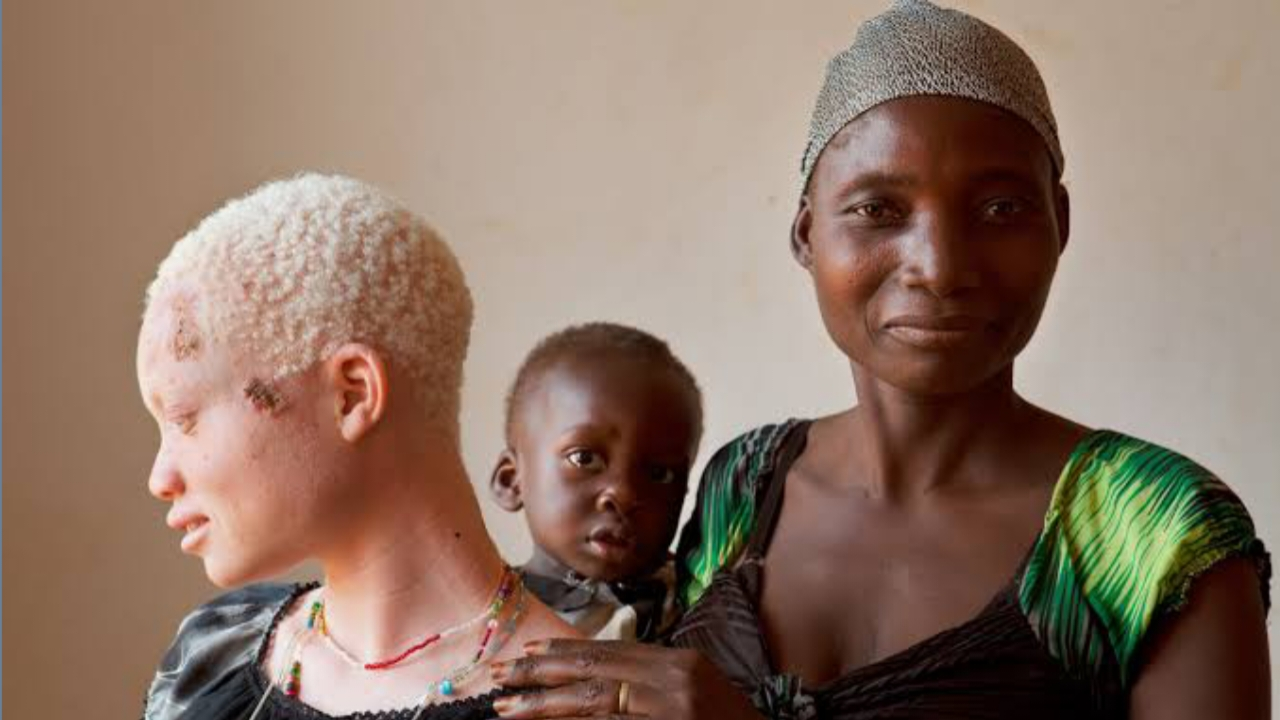Albinism or albino is a condition that causes the body to produce less or no melanin. Albinism sufferers can be recognized by the color of their hair and skin which looks white or pale.
Melanin is a pigment produced by the body to determine the color of the skin, hair, and iris of the eye. Melanin also plays a role in the development of the eye nerves that affect vision. A lack of melanin can cause abnormal hair and skin color, to the point of interfering with vision. Albinism is classified as a rare condition, which is about 1 in every 20,000 babies born.
Causes of Albinism
Albinism is caused by changes or mutations in genes that affect melanin production. Melanin is a pigment produced by melanocyte cells found in the eyes, skin, and hair.
Mutations in those genes cause melanin production to be reduced or even not produced at all. This is what causes the symptoms of albinism.
Based on the type of gene that is mutated, albinism is divided into several types. Here is the explanation:
Oculocutaneous albinism
Oculocutaneous albinism is the most common form of albinism. This type of albinism is caused by a mutation in one of the 7 genes (OCA1 to OCA7). Mutations in this gene cause a decrease in melanin production in the hair, skin, and eyes, as well as decreased vision.
Oculocutaneous albinism occurs when each parent passes down a copy of the mutated gene to their child. This pattern of decline is called autosomal recessive.
Ocular albinism
Ocular albinism occurs as a result of a gene mutation on the X chromosome. Ocular albinism can occur in someone whose mother suffers from a mutation in the gene. This pattern of decline is called X-linked recessive .
Ocular albinism affects only the eyes and causes visual impairment. In most cases, ocular albinism is experienced by men. However, this type is less common than oculocutaneous albinism.
Albinism associated syndrome
In addition to the types above, albinism can be related to diseases that occur due to hereditary factors. Some of the diseases associated with this type of albinism are:
- Chediak-Higashi syndrome, which is a syndrome caused by a mutation of the LYST gene. This syndrome causes abnormalities in white blood cells that increase the risk of infection.
- Hermansky-Pudlak syndrome, which is a syndrome caused by a mutation in 1 of the 8 genes that make up proteins that form platelets and lung cells. This syndrome causes blood clotting disorders, as well as disorders in the lungs and digestive tract.
Risk factors for albinism
Albino is a condition suffered from birth. A child is more at risk of being born with albinism if their parents also suffer from the same condition, or if the parents carry the gene mutation that causes albinism.
Symptoms of Albinism
Lack of melanin in albinism will affect skin color, hair, eyes, and vision function. The symptoms that appear depend on the amount of melanin produced by the body.
Generally, albinism is characterized by hypopigmentation in the skin. Even so, in some cases, the skin and hair color of albinism sufferers are almost the same as their normal parents or relatives.
The signs and symptoms of albinism according to the body part affected are as follows:
Hair, skin, and iris color
The most striking sign in people with albinism is the color of their hair and skin. People with albinism of African or Asian descent can have yellow, reddish, or brown hair.
Hair color can also look very white, but can turn darker with age. These changes can be caused by increased melanin production, or exposure to certain minerals in the environment.
Meanwhile, the skin of albinism sufferers can be very white. The skin of people with albinism is also very sensitive to exposure to sunlight. As a result, people with albinism are more susceptible to sunburn and skin cancer.
The irises of people with albinism can also be brown, bright blue, or reddish.
Eyes
All types of albinism cause eye disorders. Some of the signs and symptoms are:
- Decreased visual function due to abnormalities in the development of the retina
- Uncontrolled eye movements or nystagmus
- Eyes sensitive to light or photophobia
- Cross-eyed or strabismus
- Nearsightedness or hypermetropia
- Cylindrical eyes or astigmatism
- Farsightedness or myopia
- Blindness
The visual impairment can make children with albinism look awkward and confused when crawling or picking up an object. However, children’s ability to adapt will generally improve with age.
When should you go to the doctor?
Immediately check the child to a doctor if he suffers from albinism and experiences a number of complaints, such as frequent nosebleeds, easily bruised skin, or infections. The condition can indicate a more dangerous type of albinism.
If you suffer from albinism, check with your doctor according to the schedule. Routine examinations can prevent worsening conditions and complications.
Diagnosis of Albinism
To diagnose albinism, the doctor will perform a physical examination by looking for abnormalities in the color of the patient’s hair, skin, and iris. The doctor will also perform electroretinography, which is an examination to detect disorders in the eyes related to albinism.
Although albinism can generally be detected by physical examination, the doctor will perform a genetic test to further confirm the diagnosis, especially if there is a history of albinism in the patient’s family.
Treatment of Albinism
Albinism is caused by genetic abnormalities so this disease cannot be cured. However, there are treatment methods that can relieve symptoms and prevent worsening. The treatment includes:
- Glasses or contact lenses
To improve visual function and reduce sensitivity to light, patients can use glasses or contact lenses . Whereas in patients suffering from squint and nystagmus, doctors can overcome it with surgery. - Sunscreen
To prevent skin damage, patients will be given sunscreen with SPF 30 or more to use routinely. - Covered clothing
Patients will also be advised to wear covered clothing and sunglasses to protect the skin and eyes from exposure to ultraviolet rays, especially when going outdoors.
Complications of Albinism
Albinism can affect the sufferer’s quality of life, both physically and mentally. If left untreated, people with albinism can experience a number of the following conditions:
- Difficulty or inability to read, work, or drive due to eye disorders
- Burns due to exposure to sunlight that can develop into skin cancer
- Stress due to the sufferer’s low self-esteem, because he sees himself as different or because of being bullied by people around him
Prevention of Albinism
Albinism cannot be prevented. If you suffer from albinism or have a history of albinism in your family, you should first consult with your doctor before planning a pregnancy. The purpose is to find out how much the risk of albinism decreases in children.
References :
Editorial (2019). Albinism: Myths and Reality. The Lancet Child & Adolescent Health, 3(8), pp. 511.
Marçon, C. & Maia, M. (2019). Albinism: Epidemiology, Genetics, Cutaneous Characterization, Psychosocial Factors. Anais Brasileiros de Dermatology, 94(5), pp. 503–20.
Morris, C., et al. (2018). Function and Regulation of the Caenorhabditis elegans Rab32 Family Member GLO-1 in Lysosome-related Organelle Biogenesis. PLoS Genetics, 14(11), pp. 1–36.
Maharani, S., Noviekayati, I., & Meiyuntariningsih, T. (2017). The Effectiveness of Expressive Writing Therapy in Reducing Stress Levels in Teenagers with Albino Viewed from Introvert and Extrovert Personality Types. Persona: Journal of Indonesian Psychology, 6(2), pp. 98–110.
National Health Services UK (2020). Health A to Z. Albinism.
Cleveland Clinic (2021). Diseases & Conditions. Albinism.
Mayo Clinic (2018). Diseases & Conditions. Albinism.
Jaliman, D. WebMD (2021). Hyperpigmentation, Hypopigmentation, and Your Skin.
Kivi, R., & Solan, M. Healthline (2021). Understanding Albinism.

